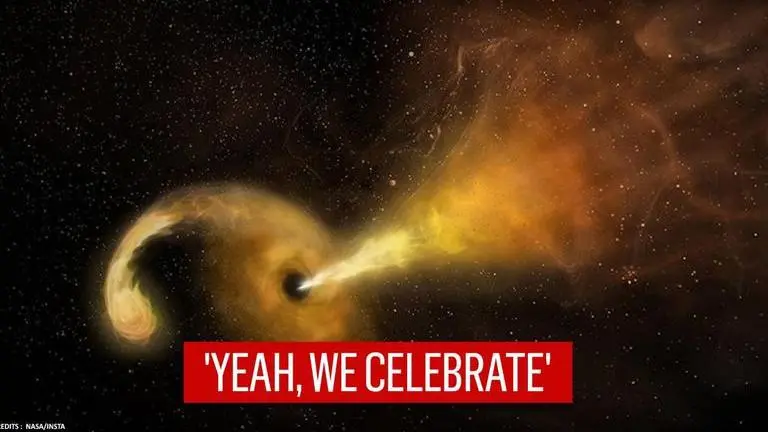Updated 29 November 2020 at 18:51 IST
NASA celebrates Black Friday by recalling basics of supermassive Black Hole
National Aeronautics and Space Administration (NASA) joined ‘Black Friday’ celebrations along with rest of the world by talking about ‘Basics of Black Hole’.
- Science News
- 2 min read

The National Aeronautics and Space Administration (NASA) also joined ‘Black Friday’ celebrations on November 27 along with many parts of the world by talking about ‘Basics of Black Hole’. While for the rest of the world, Black Friday usually depicts the beginning of the countdown for Christmas holiday season, NASA marked the ‘Black Hole Friday’ by giving an insight on the mysterious formations in the universe that have continued to baffle the researchers with new discoveries to this date.
Taking to the official social media accounts, NASA said “Yeah, we celebrate” Black Friday and then rendered the holiday as ‘Black Hole Friday’. Urging the followers to “Let’s go back to basics with some Black Hole 101”, NASA explained what a Black Hole is in a caption along with an intriguing representational image of the Black Hole. NASA wrote, “A black hole is an astronomical object with a gravitational pull so strong that nothing, not even light, can escape it.”
Further explaining the structure, the space agency wrote, “A black hole’s “surface,” called its event horizon, defines the boundary where the velocity needed to escape > the speed of light, which is the speed limit of the cosmos. Matter and radiation fall in, but they can’t get out,” before explaining that the image shared on November 27 is an artist’s concept when a star passes “fatally close” to a supermassive black hole. Take a look:
Advertisement
Visual of stellar-mass black hole's 'superluminal ejection'
Meanwhile, NASA also shared time-lapse footage of a stellar-mass black hole, about eight times the mass of the Sun, drifting away from its orbiting companion star and carrying out superluminal ejection in space.
Advertisement
The outburst activity was occurring at 80 per cent the speed of light, according to astronomers. Dubbed as the MAXI J1820+070, the black hole X-ray binary was discovered by the AstroSat spacecraft and its galactic flare-up was captured by NASA’s Chandra X-ray Observatory.
Sharing the stunning visuals on Twitter, NASA identified it as a stellar-mass black hole located 10,000 light-years from the planet Earth. Stellar-mass black holes form after they destroy and engulf the massive stars, NASA explained in a release.
🎥 Caught on tape 🕳️
— NASA (@NASA) November 28, 2020
Scientists recently caught a stellar-mass black hole (about 8x the mass of the Sun) pulling material away from an orbiting companion star & hurling hot material into space at over 80% of the speed of light! Dive into #BlackHoleFriday: https://t.co/Ia9qliZ4nN pic.twitter.com/KIy63vX4on
Published By : Aanchal Nigam
Published On: 29 November 2020 at 18:52 IST
